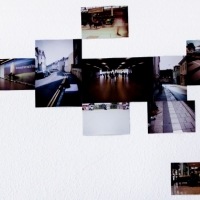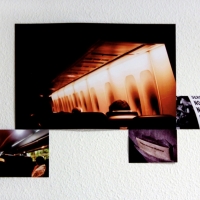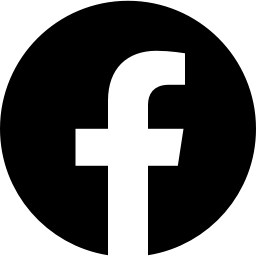Collaborative projects
 |
 |
 |
| Verisimilitude I | Formed by the other | Limítrofe. Crossing Borders |
’Verisimilitude I’ is a collaborative project between Mexican artist Pilar Cortés and Bristol-based UK digital artist Marcus Dyer. The piece consists of a polyptych of nine oil paintings by Pilar Cortés, accompanied with a smartphone-based virtual reality application and generative music composition by Marcus Dyer.
Invalid Displayed Gallery
’Verisimilitude I. Polyptych. Oil on canvas. 40 x 40 cm (each). 2014
The application ( Verisimilitude I ) places the user in a fixed position within a constantly changing 3D landscape, created using further work by Pilar Cortés.
Their piece examines the potential impact of future digital technologies on ‘traditional’ landscape art-forms. In the process, they seek to create a sense of what theorist Mario Costa describes as the ‘Technological Sublime’ (Mario Costa, International Conference of Generative Art 2004, Milan).
The ease of reproducibility of the image through digital technology has often been seen as a threat to art forms such as painting and drawing, while simultaneously photography has had a huge impact on how and what exactly artists chose to paint. A cynic could pose the argument what is the use of an art gallery when almost all art is available to see freely through the internet? As new technologies emerge allowing events “which are everywhere and nowhere” (Mario Costa, Ibid), traditional art forms are being “condemned to decay and disappear” (Mario Costa, Ibid).
Yet viewing art in galleries is still popular and the counter arguments are obvious: you can’t see the texture, the material or the place; you can’t get up close or examine the work in the context of a wider curated exhibition. The online image is a mere representation of the greater work.
But this begs two questions:
– What happens when technology can finally replicate or even exceed the experience?
Virtual reality still has its flaws and will for many years to come: resolution, a field of view, head-tracking latency, comfort, etc… are all limited in various ways. However, even in its present form bump mapping allows images to be textured, haptic feedback can be used to create the sensations of touch, size, scale and even the perceived body of the observer can be altered: a landscape can be the size of the actual landscape; a portrait can be observed from the perspective of the portrait.
– Couldn’t the criticism that a digital image is only a representation of a greater work also be leveled at the original painting compared with what it itself is representing?
The intention here is not to make a value judgment as such, to say that digital technology trumps all established art-forms or vice versa, but rather to hint at the potential for digital technologies such as virtual reality to create different environments in which to experience art or experience it in previously impossible or hyper-real ways. In doing so, the aim is to challenge traditional notions of authenticity, specifically what is considered to be real/natural vs what is unreal/unnatural and whether there is a point at which this new artificial, non-place can finally be accepted and valued on an equal footing.
And what does it mean if our sense of the sublime can be invoked by deterministic calculations alone?
“Today, it’s no longer possible to make the distinctions and separations as before, when they were obvious and spontaneous: interior and exterior, mental and physical, near and far, natural and artificial, here and there, duration and technological time and so on, all merge together and become blurred.” (Mario Costa, International Conference of Generative Art 2004, Milan)
LINKS
Formed by the other. By Solly Sollomon and Pilar Cortés Núñez.

“Formed by the other” is a collaborative project between Mexican artist Pilar Cortes and Bristol-based UK artist Solly Solomon in which the theme of identity is to be the central focus for the partnership. The artists aim to question the notions of painting as a representation of the self and self-expression: how one´s identity is formed by the other. This subject urges the artists to establish and engage in a dialogue which allows examination and confrontation of their own identity by the other. This is only possible by developing a close working relationship which will allow for integration between the artists, reflecting, in some ways, the process of integration of the Mexican artist into UK society.
This notion was executed in the form of a diptych with the intention being that each artist will paint the other artist, whilst both working alongside each other in the same studio. The objective of this process is that a dialogue will emerge, not only through oral engagement, but through the medium of paint. The collaborative process allowed for each artist to work on both paintings. This interaction and engagement will enable a sense of dialogue to form through the painting process itself.
Limítrofe. Crossing Borders
By Helena Hernández & Pilar Cortes.
With the collaboration of Marcus Dyer.
The project focuses on the conditions of migration, movement and travel, where either for reasons of survival or recreation, one must constantly reaffirm and restate one’s own identity, actions, nationality, language and boundaries.
The documents required for crossing borders vary from place-to-place. They often depend on a person’s status and what business they are involved in, whether political, economic or social. Monitoring mechanisms may seem invisible, but in certain border areas, in which the interests and stability of a country are at risk these records and documents are required and the underlying systems are revealed.
This checking of documentation materializes any time we want to move freely in other countries, access facilities, seek employment and so forth. One must prepare strategies to deal with the cracks and crevices; requirements of bureaucracy that cannot always be met. Such individuals become vulnerable; their freedom dependent on little more than the contents of a purse, backpack or suitcase.
The project aims through a multidisciplinary facility to transform the space into a non-place; a place where the processes and environments which make all alike, come together
No Place Like No Place (Other)
By Marcus Dyer and Pilar Cortés.
Michael Sorkin, Email Conversation, New York/Tijuana, 2004
Not long ago, after a talk in San Diego, I visited Tijuana. Among my companions, was my friend Omar. Omar was a Palestinian architect who had recently moved to Irvine, US. Omar had been depressed and suffering from agoraphobia, deeply affected by the right-wing politics and suburban alienation endemic in the country. There, he had no car and had found himself trapped in his apartment, forced to walk miles just to buy some milk.
We picked him up at the station in San Diego and went south. Orange County was for him both alien and familiar at the same time. Communities of tiled roofs and fortified entrances created an architecture of exclusion, and invoking memories of Israeli settlements and made him feel like a second class citizen. We tried to make him feel better with promises of companionship, seafood and tequila.
Upon reaching the checkpoint to cross the border, his mood began to change. The presence of armed guards revived his nostalgia and he suddenly felt at home. Looking at the city, the graffiti on the wall, he began to smile. Arriving at the beach bar, he was glad. “I love this place,” he said. “It could be Gaza.”


 Español
Español

















